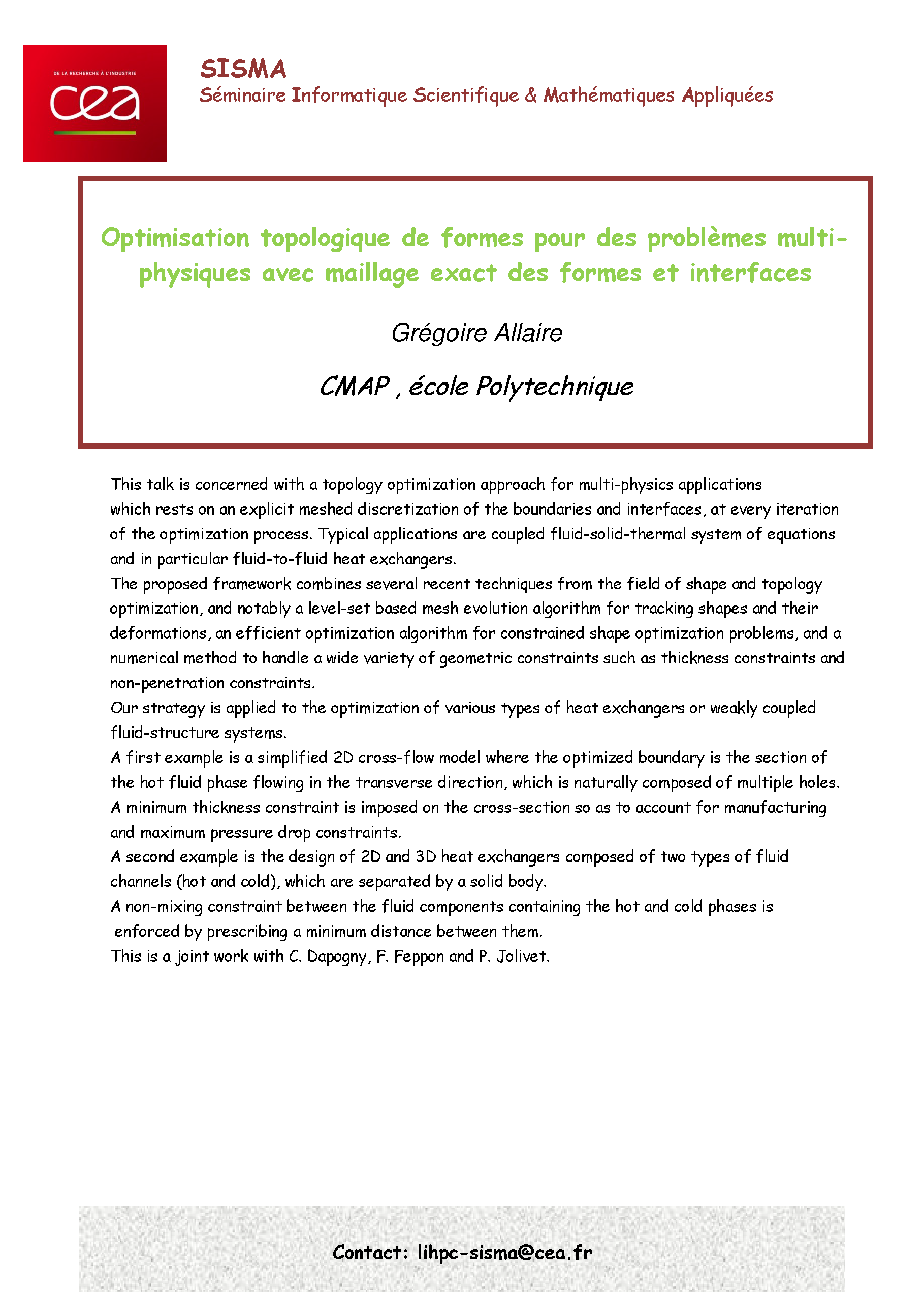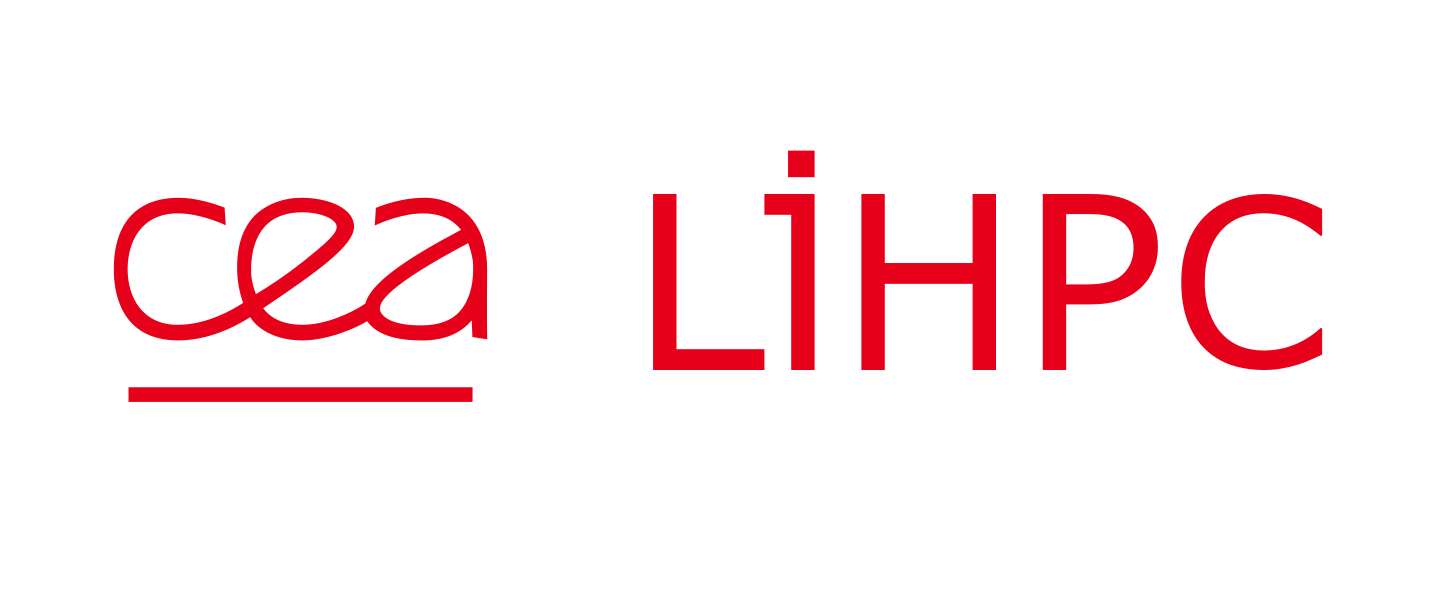This talk is concerned with a topology optimization approach for multi-physics applications
which rests on an explicit meshed discretization of the boundaries and interfaces, at every iteration
of the optimization process. Typical applications are coupled fluid-solid-thermal system of equations
and in particular fluid-to-fluid heat exchangers.
The proposed framework combines several recent techniques from the field of shape and topology
optimization, and notably a level-set based mesh evolution algorithm for tracking shapes and their
deformations, an efficient optimization algorithm for constrained shape optimization problems, and a
numerical method to handle a wide variety of geometric constraints such as thickness constraints and
non-penetration constraints.
Our strategy is applied to the optimization of various types of heat exchangers or weakly coupled
fluid-structure systems.
A first example is a simplified 2D cross-flow model where the optimized boundary is the section of
the hot fluid phase flowing in the transverse direction, which is naturally composed of multiple holes.
A minimum thickness constraint is imposed on the cross-section so as to account for manufacturing
and maximum pressure drop constraints.
A second example is the design of 2D and 3D heat exchangers composed of two types of fluid
channels (hot and cold), which are separated by a solid body.
A non-mixing constraint between the fluid components containing the hot and cold phases is
enforced by prescribing a minimum distance between them.
This is a joint work with C. Dapogny, F. Feppon and P. Jolivet.




